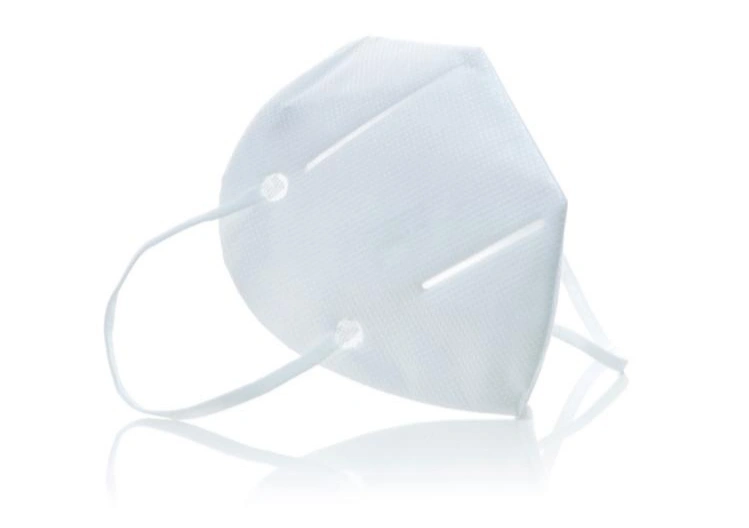Grandpa Zhang has the habit of morning exercise, but whenever there is smog, he gets worried. Every time I come back from going out, my throat is dry, itchy and uncomfortable, and I keep coughing. It feels as if my throat is covered with a layer of dust. In fact, the harmful particulate matter in smog, such as PM2.5, is small in size and can directly enter and adhere to the respiratory tract and alveoli. Long-term inhalation will increase the risk of respiratory diseases and cardiovascular diseases. Data shows that on smoggy days, the number of emergency visits for respiratory diseases is 20% to 30% higher than usual. To go out safely on smoggy days, choosing the right protective mask is of vital importance. Now let me tell you about the five key criteria for choosing protective masks.
1.check the filtration efficiency
Filtration efficiency is the core indicator for measuring the protective performance of masks. The main pollutant in smog, PM2.5, has a diameter of less than or equal to 2.5 micrometers and is extremely easy to be inhaled by the human body. Ordinary masks and disposable non-woven fabric masks have limited protection against such tiny particles and can only block dust and large particles. It is recommended to choose masks marked with KN95 or N95 (with a minimum filtration efficiency of 95% for non-oily particles under the test conditions specified by the standard), FFP2 (with a minimum filtration efficiency of 94%) or higher standards. Experiments conducted by the Chinese Center for Disease Control and Prevention show that when the environmental PM2.5 concentration is approximately 350μg/m³, after actually wearing a KN95 mask, the PM2.5 reduction rate exceeds 84%. After wearing KN90 masks, the decline rate was 81.5%. However, ordinary disposable non-woven fabric masks have almost no effect on reducing PM2.5. Therefore, to effectively filter out haze particles, it is necessary to choose such masks with high filtration efficiency.

2. Re-tightness
Even if the filtering material of the mask is excellent, if it does not fit the face well, the protective effect will be greatly reduced. According to the principles of fluid mechanics, air flow tends to flow towards areas with less resistance. If there is a gap between the mask and the face, the breathing air will directly pass through the gap without going through the filter material and thus cannot play a filtering role. Even a gap of just 1mm will significantly reduce the protective efficiency. When choosing a mask, make sure it fits your face well. After wearing it, slightly bend and close your fingers of both hands, then place them on the left and right sides of the mask respectively, and take a deep breath. If the edges of the mask can adhere tightly to the face, it basically fits well. If you feel that there is gas leaking from the nose clip or both sides, you should readjust the position of the nose clip, headband or ear band. It can be tested in combination with daily actions such as turning your head, lowering your head and raising your head. If it still leaks air after repeated adjustments, it indicates that the mask does not fit your face shape and needs to be replaced.
3. Control breathing resistance
The higher the protective performance of a mask is, the greater the breathing resistance is usually. The ventilation resistance of N95 masks is approximately 300 Pascals, while that of ordinary medical masks is less than 49 Pascals. High breathing resistance makes it difficult for the wearer to breathe. Over time, it can easily lead to discomfort such as dizziness and chest tightness, especially affecting people with weak heart and lung functions. Therefore, under the premise of ensuring the protective effect, masks with low breathing resistance should be chosen. For instance, you can choose a mask with an exhalation valve. When exhaling, the valve opens, which can reduce the resistance of exhalation, decrease the feeling of stuffiness and make breathing smoother. However, it should be noted that masks with exhalation valves are not suitable for those who have already been infected with the virus, as the exhaled air is directly discharged without filtration, which may infect others.
4. Check the safety of materials
The material of masks comes into direct contact with the mouth and nose, so safety is of Paramount importance. Poor-quality masks may use materials with excessive harmful chemicals, which can irritate the respiratory tract and cause allergies and other problems. When choosing, check the product label to ensure that the mask complies with relevant national standards, such as "Respiratory Protection - Self-inhalation Filtering Particulate Respirators" (GB 2626-2019) and "Technical Specifications for Daily Protective Masks" (GB/T 32610-2016), etc. Avoid buying masks with pungent odors and rough workmanship. At the same time, pay attention to the hygiene and safety of masks. For instance, disposable masks should not be reused to prevent the breeding of bacteria and viruses. If allergic symptoms such as skin itching and redness occur after wearing a mask, stop using it immediately and consult a doctor.
5. Adapt to different groups of people
The demand for masks varies among different groups of people. Children are in a stage of growth and development, with small face shapes. Adult masks may not fit well, so it is necessary to choose protective masks specifically designed for children produced by regular manufacturers. Pregnant women have a heavy physical burden and high requirements for comfort. They can choose protective masks with exhalation valves to reduce exhalation resistance and the feeling of stuffiness. It is best to consult a professional doctor before wearing them. The elderly, patients with chronic diseases and those with respiratory diseases have relatively weak heart and lung functions. Wearing masks may aggravate their discomfort. It is recommended that they choose and use masks under the guidance of professional doctors. For instance, people with breathing difficulties such as those suffering from chronic obstructive pulmonary disease and asthma are suitable for masks with air valves.
In conclusion, when choosing protective masks on smoggy days, five criteria should be comprehensively considered: filtration efficiency, fit, breathing resistance, material safety and suitability for different groups of people. Only by wearing masks correctly can we effectively block harmful particles on hazy days and protect our health. If breathing difficulties, allergies or other discomforts occur during wearing, the mask should be adjusted or replaced in time.


 08-Sep--2025
08-Sep--2025